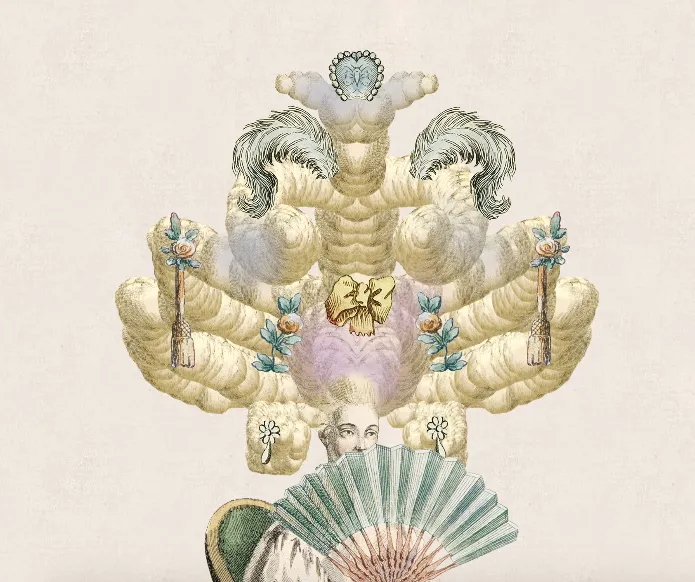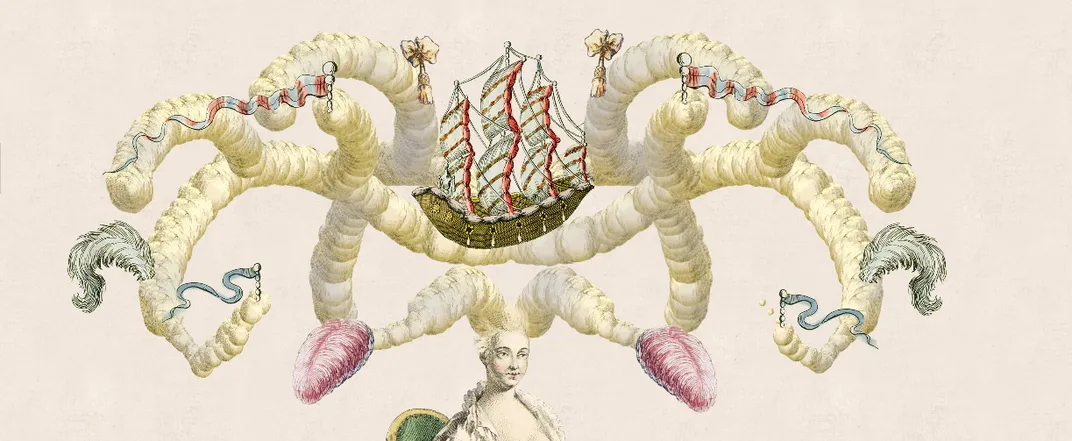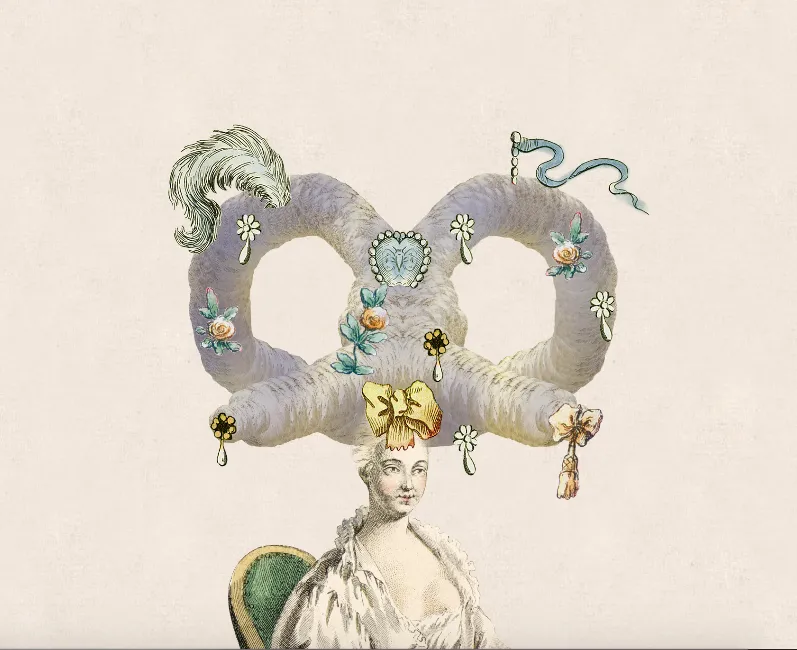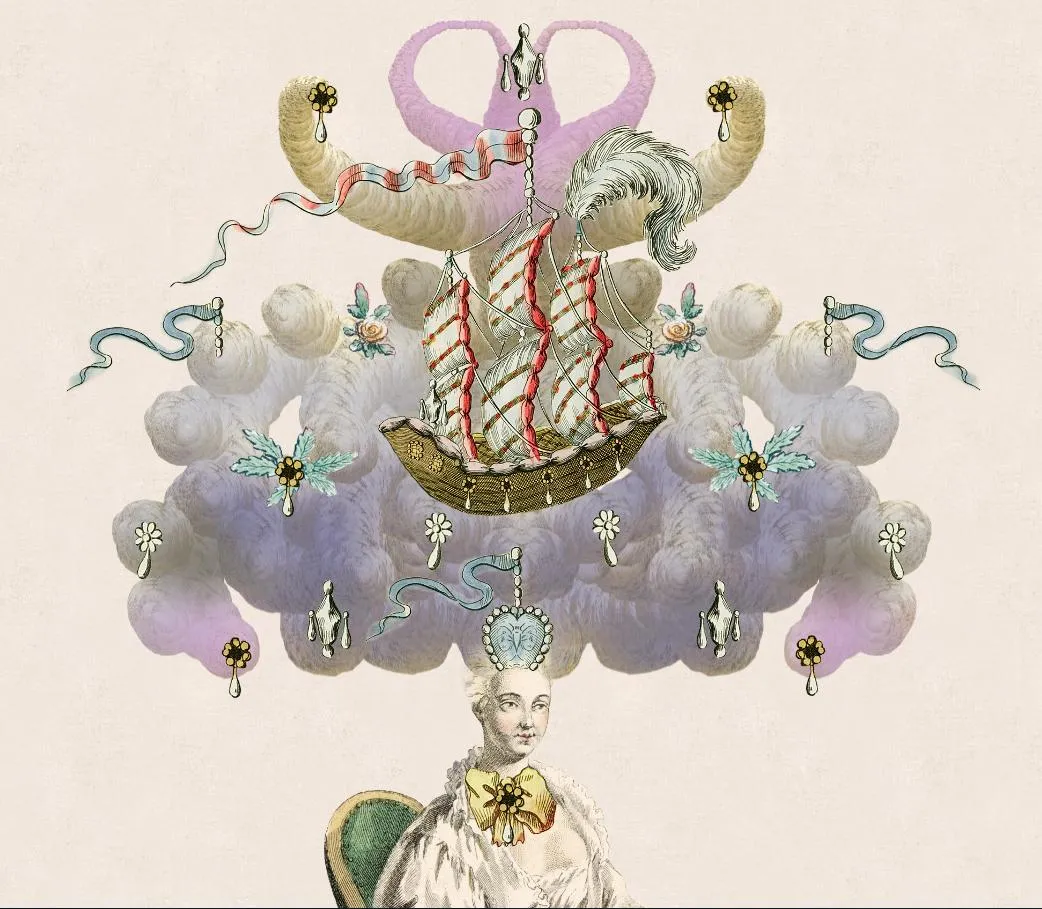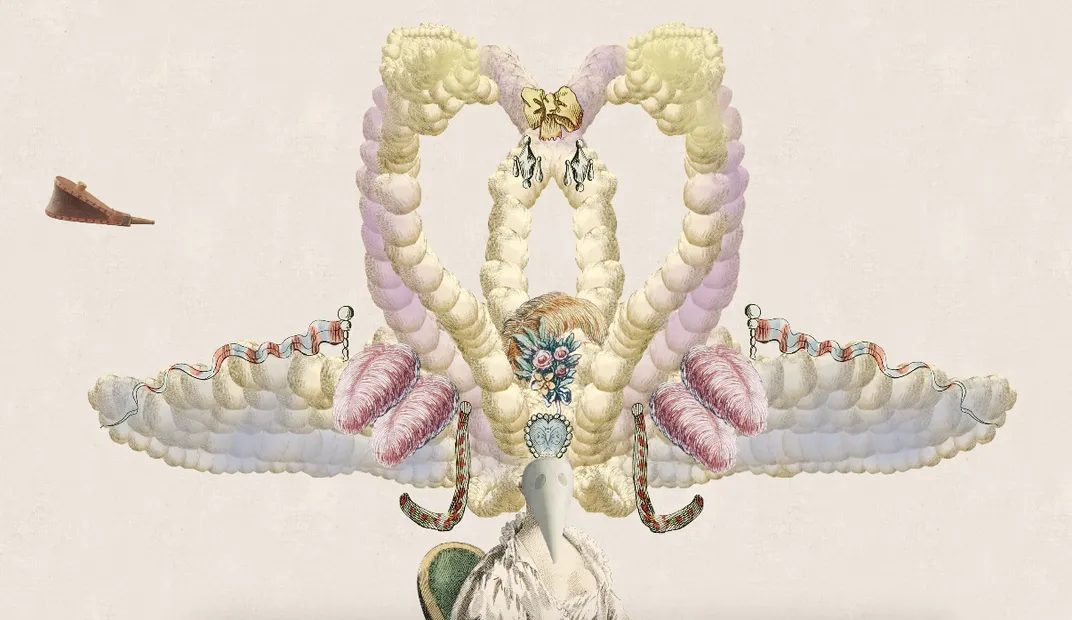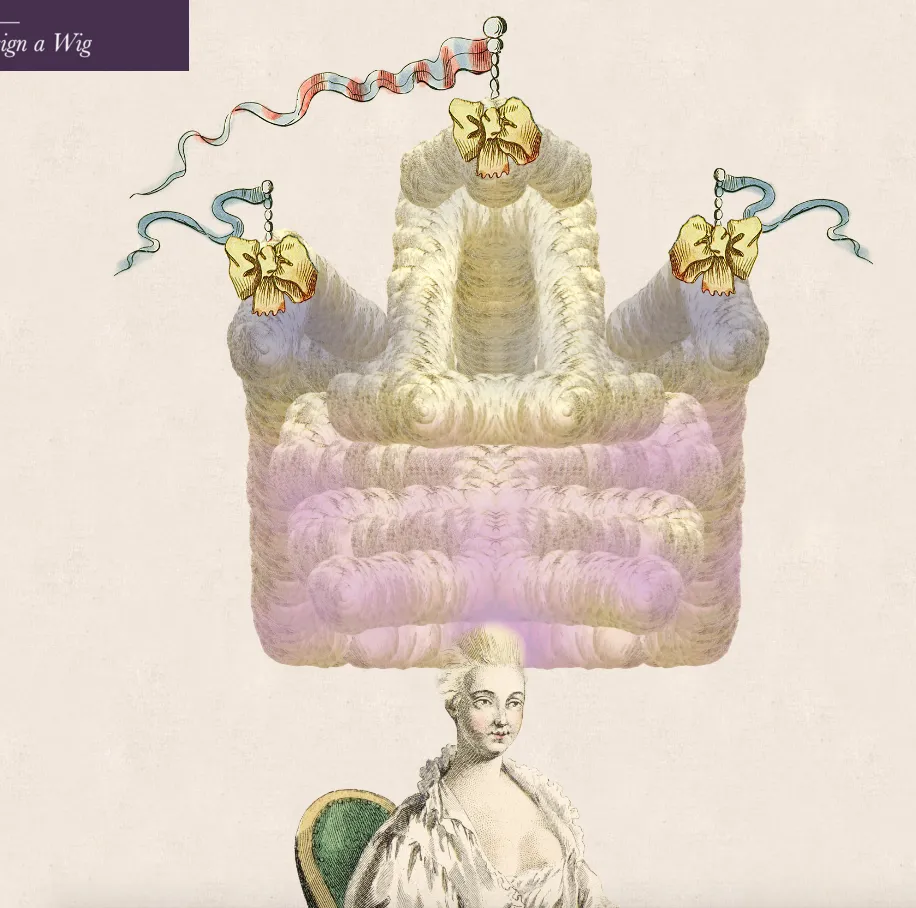Create Your Own Delightful, Excessive Version of 18th-Century Women’s Hairstyles
A museum’s interactive tool gives the powdered styles of the French Court of the 1700s some fierce competition
Any oddities about current fashion seem to fade in comparison to the excessive fashion trends of centuries past. The towering powdered hairstyles of the 18th century are an excellent example. Now, thanks to The Victoria and Albert Museum in London, designing elaborate Marie Antoinette-style hair is just a click away.
The museum's online tool takes users through the steps of sculpting hair into poofs and curls, decorating with flowers, feathers and even model ships, and finally powdering with pastel pinks, blues and purples. “It is very simple and also extremely addictive,” writes Kelly Faircloth for Pictorial.
For the real 18th-century women who wore such styles, the process of having one's hair made up might not be described in quite those terms. Wigs first became popular for men, not women. In 1624, Louis XIII, the king of France, went prematurely bald and hid his smooth scalp with a wig. The fashion soon caught on among the aristocracy but became even more universal when his son, Louis XIV, donned a full-bottomed curly wig for his reign. In the first part of the 18th century, it became popular to powder wigs to make them lighter. At that time, women also began to powder their hair, though having natural hair remained more popular than wearing wigs. Then, in 1760, women’s coiffure started to rise, aided by pomade and hair pads. From there, it wasn’t long for towering creations to become the height of fashion.
The V&A Museum, well known for its collection of decorative arts and design, explains how these women’s hairstyles were achieved. “A rich woman could spend all day with her hairdresser creating a huge hair style,” the museum's website notes. Padding, often made with wool that matched the wearer’s natural hair color, helped elevate the hair-do. False curls and hair extensions added even more complexity.
The large hairstyles helped balance out the enormous dresses that were also popular at the French Court. The hairdo spread to England and the colonies, explained Isabella Bradford for the blog Two Nerdy History Girls. While caricatures from the time tend to exaggerate the hairstyles even more, some stunningly complicated styles did crop up. There’s even record of some styles fashioning ships and cannons into the designs to commemorate important battles. However, the average woman was more likely to adopt more restrained styles of what was in vogue.
Bradford interviewed three women who work at Colonial Williamsburg who have carefully researched the hairstyles of the day to create their own authentic-as-possible versions. Unlike the hours spent by the wealthy to prepare their hair, these women were able to come up with voluminous coifs that take about 10 to 15 minutes to style—a schedule more in keeping with their working women’s roles in the dressmaker shop of Williamsburg. “A skilled 18th c. professional hairdresser would have been able to perform the basics in less time, plus construct a more towering edifice of hair complete with flowers, ribbons, and strands of pearls,” wrote Bradford.
Still, even the most elaborate styles of the day seem unlikely to match some of the gravity-defying extravagances coming out of the digital age, in the form of the V&A Museum game.
